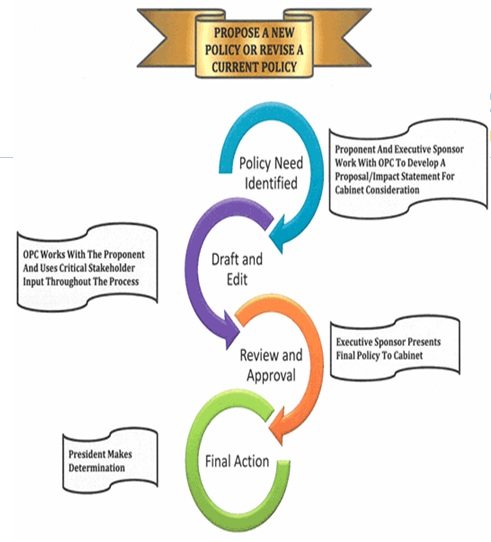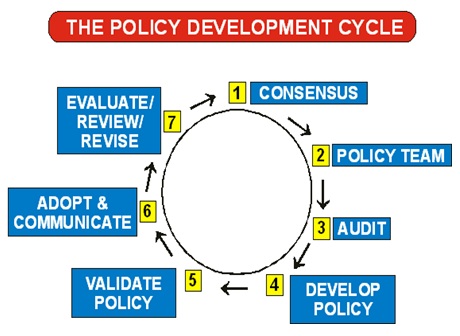Policy & SOP development
We will develop and package your HR Management policies into a sound HR Manual, Staff Handbook, whatever you call it; and implement it through expert processes to cultivate your much desired behavior and organizational culture. Productive culture of course.
Why policies are important
- Keep the organization in compliance with legislation and provide protection against employment claims
- Document and implement best practices appropriate to the organization
- Support consistent treatment of staff, fairness and transparency
- Help management to make decisions that are consistent, uniform and predictable
- Protect individuals and the organization from the pressures of expediency
Some sample area of policy covered:
CHAPTER 1: INTRODUCTION
1.1 Introduction to the Manual
1.2 Responsibilities of the Employee and behavioral norms
1.3 Purpose and applicability
1.4 Professional Code of Conduct
1.5 Classification of Employees
1.6 Commencement of Service
1.7 Probation Period
1.8 Termination within probation period
1.9 Resignation during Probation period
1.10 Confirmation
1.11 Re-designation
1.12 Transfer
1.13 Formal handing over charges on transfer
1.14 Joining period on transfer
1.15 Inability to join within the stipulated time
1.16 Temporary Duty Transfer
1.17 Full-time employment
1.18 Honorary membership with other organizations
1.19 Policy implementation and monitoring
1.20 Policy amendment process
CHAPTER 2: RECRUITMENT AND SELECTION
2.1 Principles
2.2 Hiring principles
2.3 Principles on Gender Relation
2.4 Job Analysis Information
2.5 Job Description (JD)
2.6 Vacancy Announcement
2.7 Short list of applications
2.8 Test/Interview and selection
2.9 Some Benchmarks
CHAPTER 3: STAFF SALARY AND BENEFITS
3.1 Salary and Benefits: Principles
3.2 Salary increment/Salary rise
3.3 Career Development
3.4 Position, Level and Salary Structure
3.4.1 Basic salary scale of 2006 for staff members
3.5 Salary
3.6 Basic Salary
3.7 Cost of Living Adjustment (COLA)
3.8 Review of Salary Structure
3.9 House Rent Allowance
3.10 Conveyance Allowance
3.11 Medical Allowance
3.12 Children’s Education Allowance
3.13 Overtime
3.14 Salary Deduction
3.15 Staff Income Tax
3.16.1 Gratuity
3.16.2 End of Contract Benefit
3.17 Festival Allowance
3.18 Voluntary Contribution
3.19 Telephone Allowance
Table # 3.19 Allocation of Telephone allowance
3.20 Travel Allowance
3.20.5 Travel Cost
3.20.5 Travel Allowance: Mode of Transport, Lodging and Perdiem
3.20.6 Meal Allowance
3.21 International Travel
3.22 Foreign Travel Allowance
3.23 Transfer Allowance
3.24 Staff Insurance Coverage
3.25 Child Care Facility
3.26 Bi-cycle for Support Staff
3.27 Expenses of Trustees
CHAPTER 4: TRAINING, STAFF DEVELOPMENT AND INTERNSHIP
4.1 Objective
4.2 Basic Principles
4.3 Responsibility 0
4.4 Type of Training
4.4.1 Evaluation
4.6 Induction and Orientation
4.7 Career planning for the staff
4.8 INTERNSHIP
4.8.1 Intern
4.8.2 Qualification
n 4.8.3 Application & Selection Process
4.8.4 Terms of Contract
4.8.5 Supervision
4.8.6 Tenure
4.8.7 Performance Evaluation
4.8.8 Placement
4.8.9 Working hours and Leave
4.8.10 Allowance
4.8.11 Office & Related Facilities
4.8.12 Reporting, Evaluation & Certificate
4.8.13 Future Prospects in the Company
4.8.14 Termination
CHAPTER 5: LEAVE AND HOLIDAYS
5.1 General Condition
5.2 Office Hours
5.3 Holidays
5.4 Attendance
5.5 Leave Policy: General Principles
5.5.11 Categories of leave
5.5.11.1 Earned Leave
5.5.11.2 Leave facility for illness
5.5.11.3 Casual leave
5.5.11.4 Maternity Leave
5.5.11.5 Service condition during maternity period
5.5.11.6 Special Leave
5.5.11.7 Compensatory leave
5.5.11.8 Leave without pay
5.5.11.9 Rest and Recreation leave
5.5.12 General Procedure of Applying for and Availing of Leave
CHAPTER 6: PERFORMANCE MANAGEMENT SYSTEM
6.1 Principles
6.2 Performance management process
6.3. Performance rating
6.4. What to evaluate and who
6.5 Appraisal form and Timeline
6.6 Appraisal outcome
6.7 Appraisal Copy
6.8 Special Reward for Outstanding Performance
CHAPTER 7: DISCIPLINARY ACTION AND SEPARATION
7.1 Objective
7.2 Termination
7.3 Termination Benefits
7.4 Misconduct Defined
7.5 Show Cause
7.7 Investigation
7.8 Punishment
7.9 Procedure of Suspension
7.10 Grievance Procedures
7.11 Retrenchment
7.12 Benefits of Retrenched Staff
7.13 Release


List of policies
- Code of Conduct
- Confidentiality
- Conflict of Interest
- Working conditions
- Attendance
- Hours of Operations
- Termination (Voluntary and Involuntary)
- Recruitment
- Compensation
- Performance Management
- Learning and development
- Benefits and Eligibility
- Overtime
- Privacy
- Employee Information
- Bereavement Leave
- Compassionate Leave
- Vacation
- Sick Leave, Short Term Disability, Long Term Disability
- Maternity, Parental, and Adoption Leave
- Unpaid Leave
- Family Leave
- Grievance/Conflict Resolution
- Formal complaint process
- Disciplinary
- Discrimination and Harassment/Respectful Workplace
- Health and Safety
- Accident Reporting
- Workplace Violence
- Alcohol and Drug Use Policy
- Use of Company Equipment
- General policy on the review and update of organization policies
10 Phases of Policy & SOP development:
- Management Expectation: Every time a management expectation will be counted before going for developing any Policy or SOP
- Review existing policy / practice: Existing policy will be collected or existing practices will be reviewed.
- Analysis & Research: After collecting the data try to match with the management expectation and best practices.
- Drafting policy & SOP: Following a standard format a Policy and SOP will be drafted accommodating existing policy and practices along with management expectation and best practices
- Consultation with Line Manager: A feed back will be counted depending on the draft based on collected data and policy and research outcome .
- Review & Revision of Draft: If there is found any major error the drafted policy & SOP will be revised and updated for the best benefit of the organization
- Form Development: After development of policy and SOP unique relevant forms and formats will be developed.
- Finalizing Policy, SOP & Forms: Then it will be placed to Management for approval. Having the approval it will be circulated to relevant stakeholders throughout the company.
- Orientation for Implementation: at least 2 sessions of Q&A for implementation will be conducted to make it understandable and implemented accordingly with help of head of the department of the business.
- Annual Post Implementation Review: An annual review will take place to check whether the is being implemented accordingly. A report will be submitted to the management on the findings.
